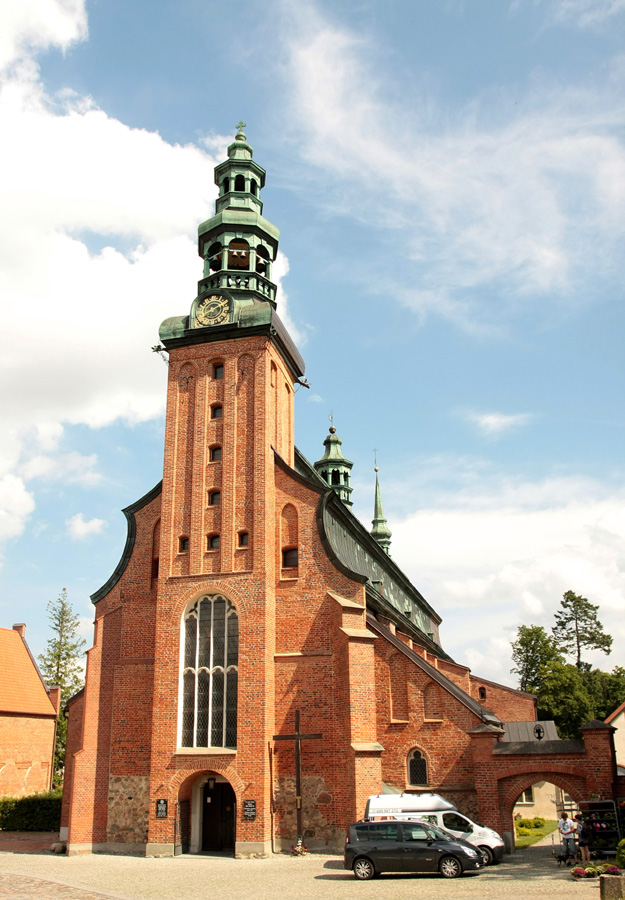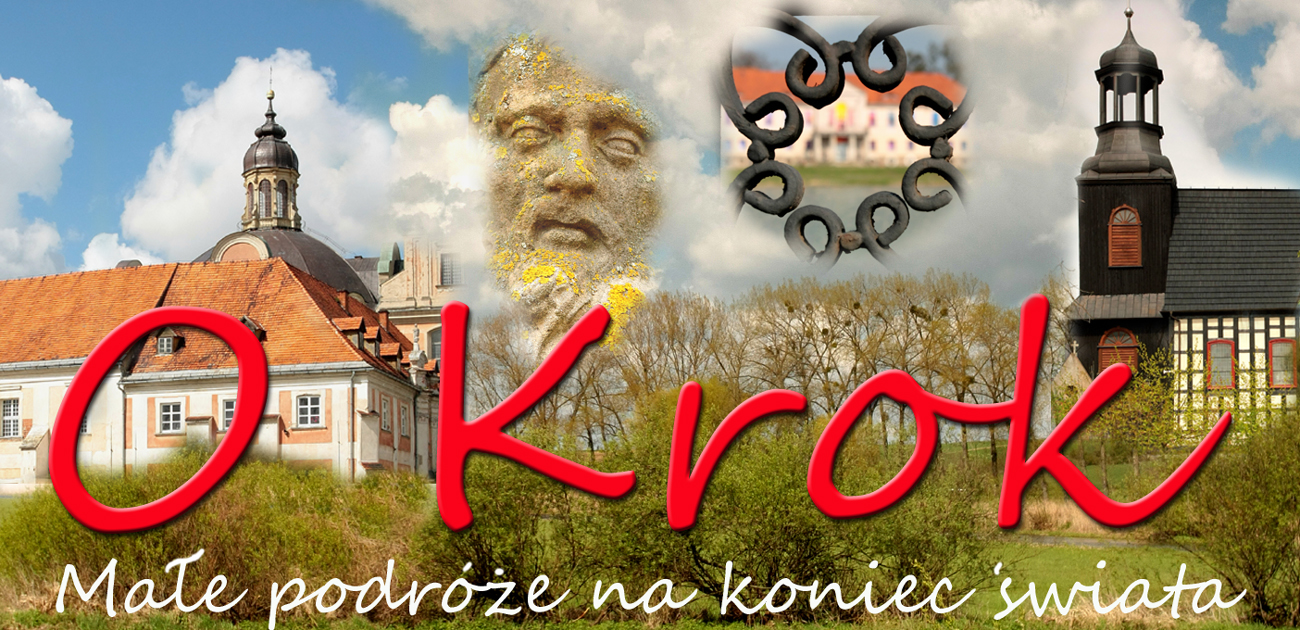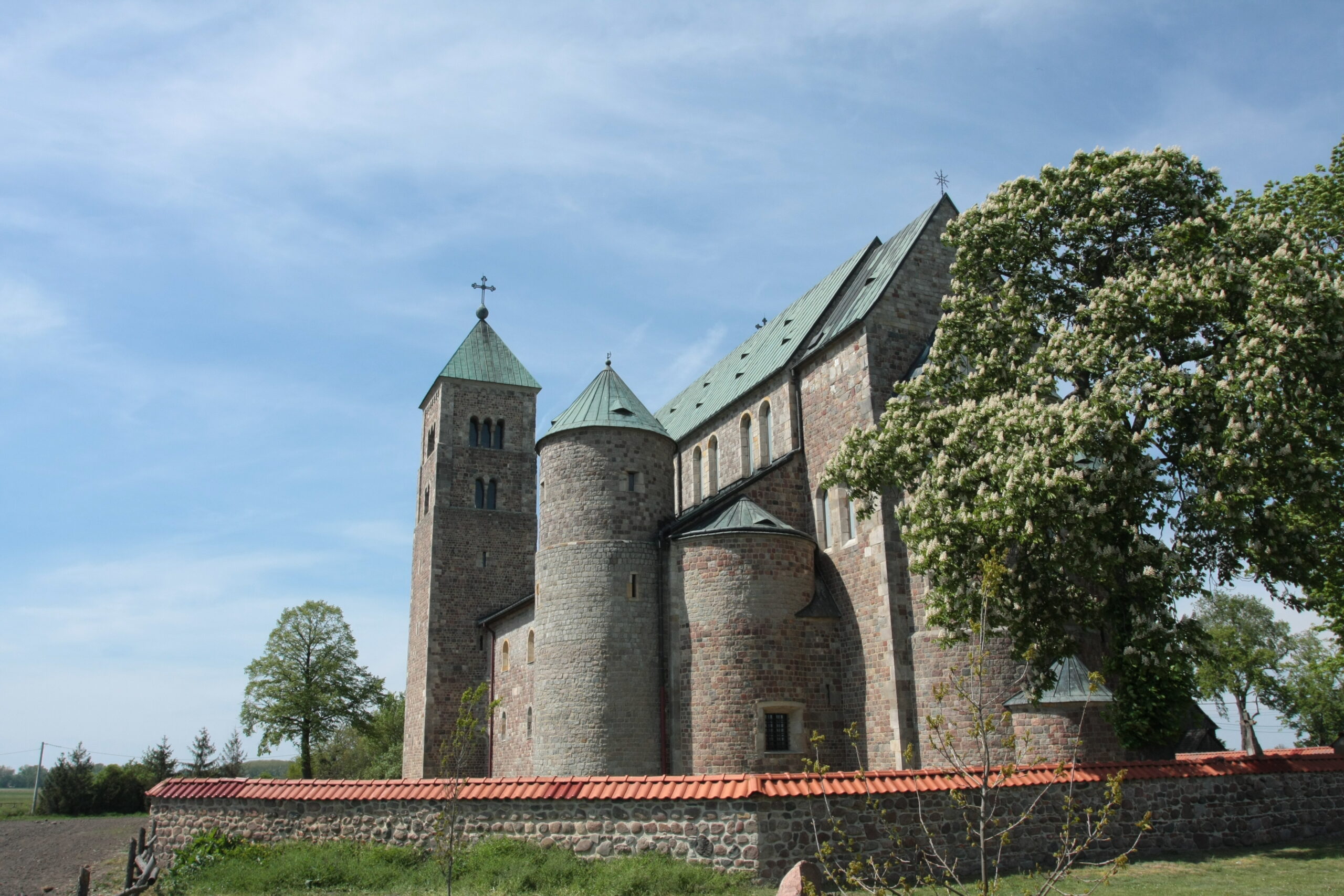Dach-wieko trumny, stalle z mnóstwem postaci i niezrozumiała zupełnie gwara kaszubska wita nas w kolegiacie Wniebowzięcia Najświętszej Maryi Panny w Kartuzach.
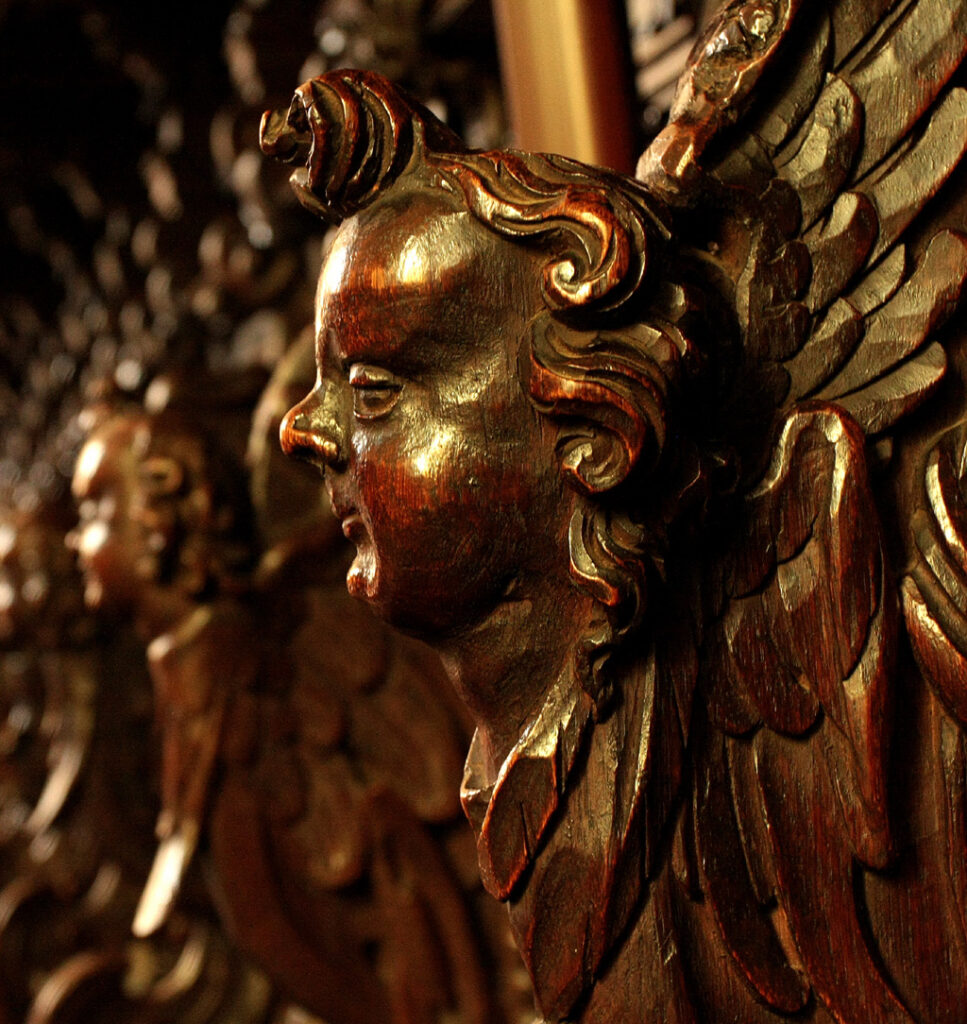
Kościół zgromadzenia Kartuzów wybudowano w latach 1383–1405. Oryginalny dach i chełm wieży powstał od 1731 do 1733r. Możemy tam podziwiać także gotycki ołtarz z 1444 roku, ale nas zachwyciły stalle. Pierwsze z nich powstały i zostały zainstalowane w prezbiterium w 1643 roku, następne w 1677roku. Ile tam postaci! Zadają się poruszać. Usiłują przemawiać gestem i spojrzeniem. Anioły, ewangeliści, bracia eremici jako płaskorzeźby na zapleckach siedzeń. Przyciągają wzrok. Każda postać inna, małe arcydzieło snycerskiej roboty tworzą niepowtarzalną atmosferę modlitwy, skupienia, życia w kontemplacji z dala od świata na zewnątrz, za murami eremu.

Tuż przed północą srebrzysty dźwięk dzwonu niesie się po jeziorze. Księżyc w pełni wisi nad taflą wody. Zapalają się świece w eremach. Mnisi wstają na modły. Godzina czytań w celi. Potem jutrznia w kościele. Pod dachem w kształcie wieka trumny trwają nieustanne modły przerywane pracami w obejściu i rozmyślaniem w ciszy i oddaleniu od świata zewnętrznego.
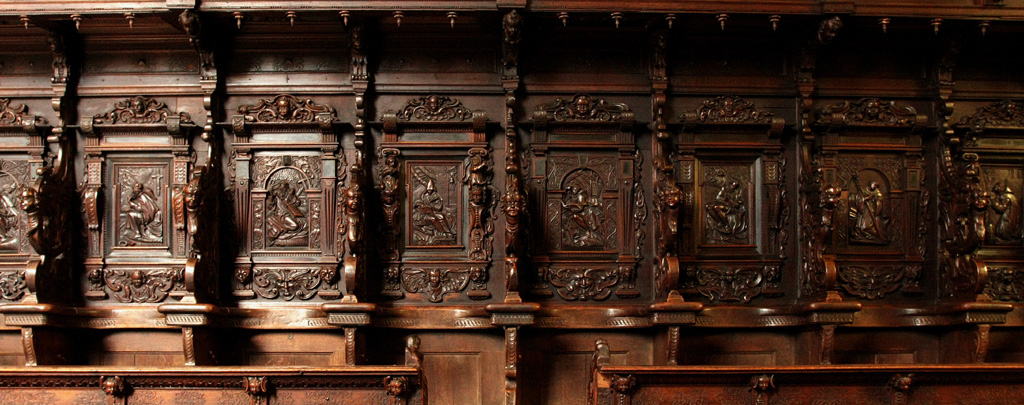
Wytarte stopami pokoleń zakonników podnóżki stalli skrzypią przy lada dotknięciu. Wygniecione kolanami klęczniki, wyświechtane łokciami podłokietniki, anioły zerkające po sobie, dzieła snycerki pamiętające wszystkie pacierze świata cystersów trwają nadal w niemej modlitwie z nas, za ciebie, za pokój na świecie, za umierających, za zmarłych, za wrogów, za obfite plony, za tych co się nie modlą i za tych którym barak odwagi. Dziś w Kartuzach nie ma już zakonników. Anioł śmierci nadal buja się pod organami. Przypominając wezwanie „Memento Mori”. Pamiętaj człowieku. Pamiętaj.
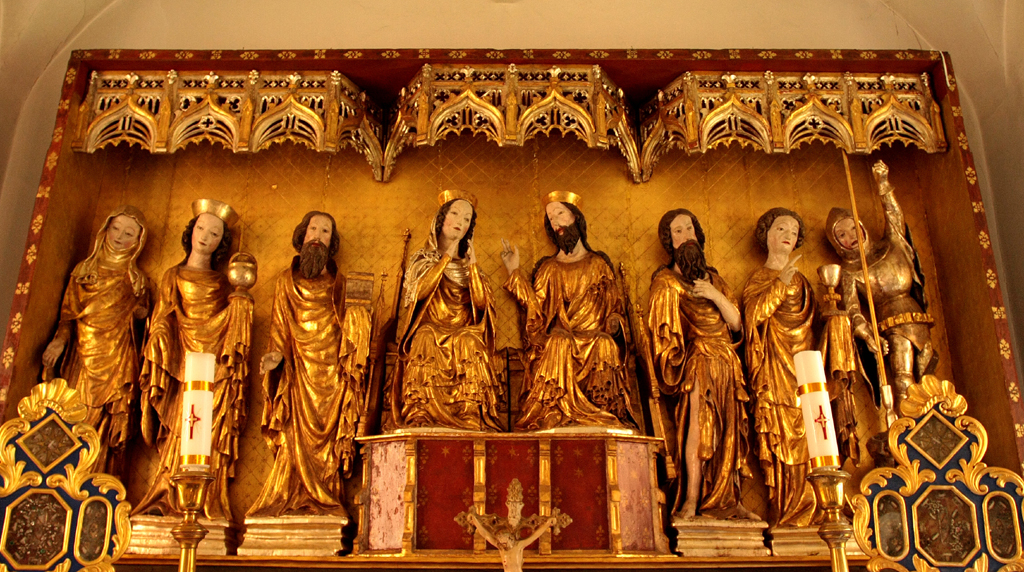
The roof-lid of the coffin, stalls with a multitude of figures and completely incomprehensible Kashubian dialect greet us in the collegiate church of the Assumption of the Blessed Virgin Mary in Kartuzy.
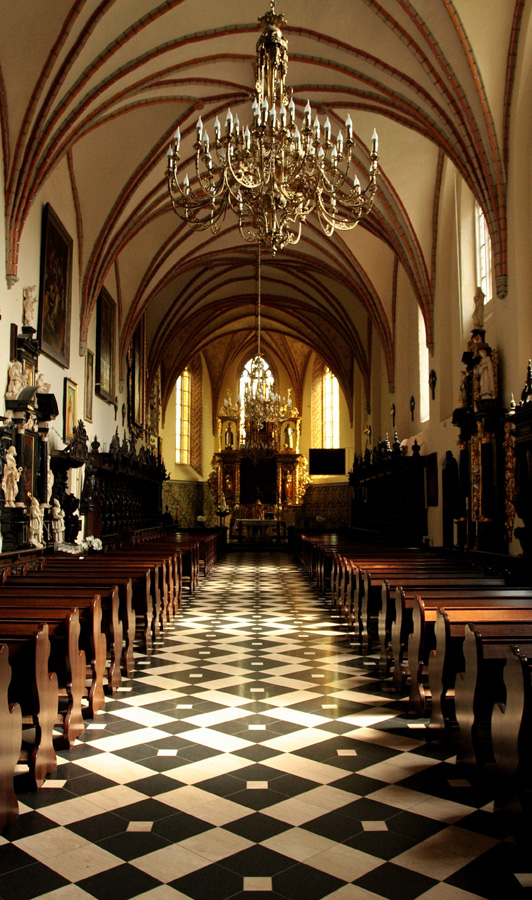
The Church of the Congregation of Kartuzy was built in the years 1383–1405. The original roof and helmet of the tower were built from 1731 to 1733. We can also admire the gothic altar from 1444, but we were delighted with the stalls. The first of them were built and installed in the chancel in 1643, the next ones in 1677. How many characters there! They seem to be moving. They try to speak with gestures and gazes. Angels, evangelists, hermit brothers as reliefs on the backs of the seats. They are eye-catching. Each figure is different, a small masterpiece of woodcarving work, creating a unique atmosphere of prayer, concentration, life in contemplation away from the outside world, behind the walls of the hermitage.
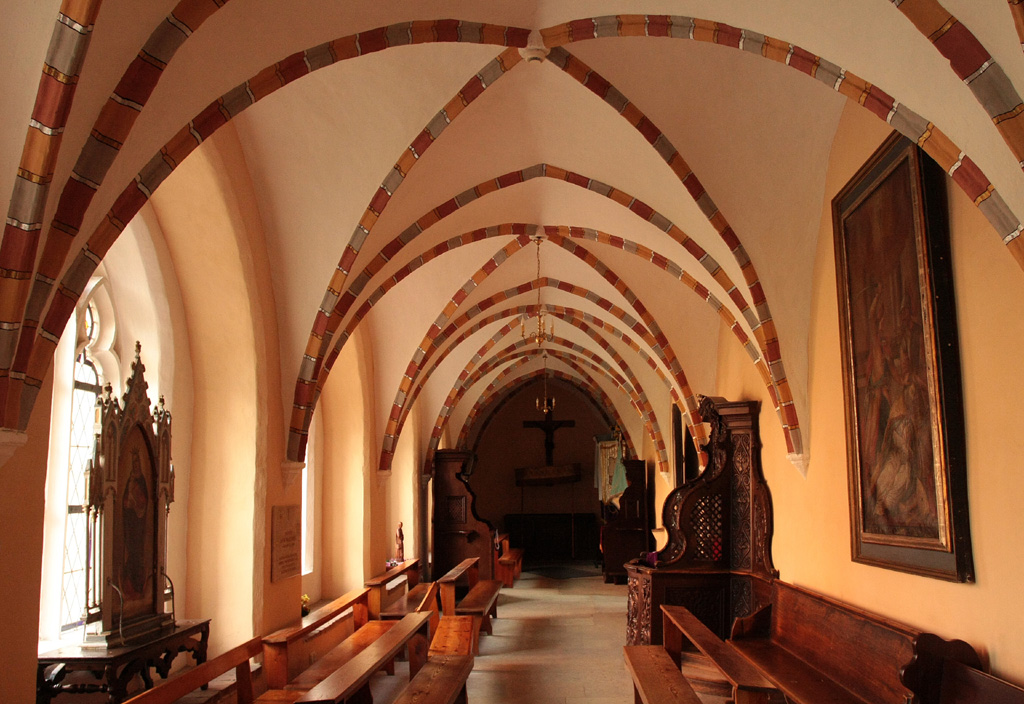
Just before midnight, the silvery sound of the bell carries over the lake. The full moon hangs over the surface of the water. Candles are lit in hermitage. The monks get up to pray. One hour of readings in the cell. Then matins in the church. Under the roof in the shape of a coffin lid, prayers continue, interrupted by work in the farmyard and meditation in silence and away from the outside world.
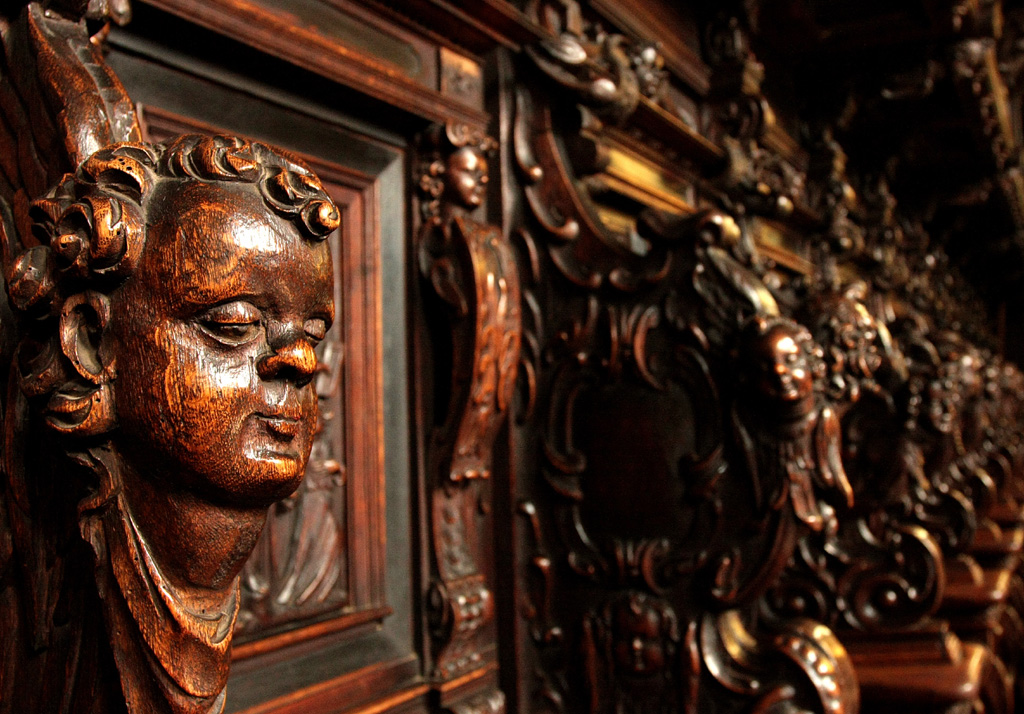
The footrests of the stalls, worn by the feet of generations of monks, creak when touched. Kneeling kneelers, threadbare armrests, angels peeking at each other, carvings remembering all the prayers of the Cistercian world continue in silent prayer with us, for you, for peace in the world, for the dying, for the dead, for enemies, for abundant crops, for those who do not pray and for those who dare. Today there are no monks in Kartuzy anymore. The angel of death still rocks under the organ. Recalling the call of 'Memento Mori’. Remember man. Remember.
